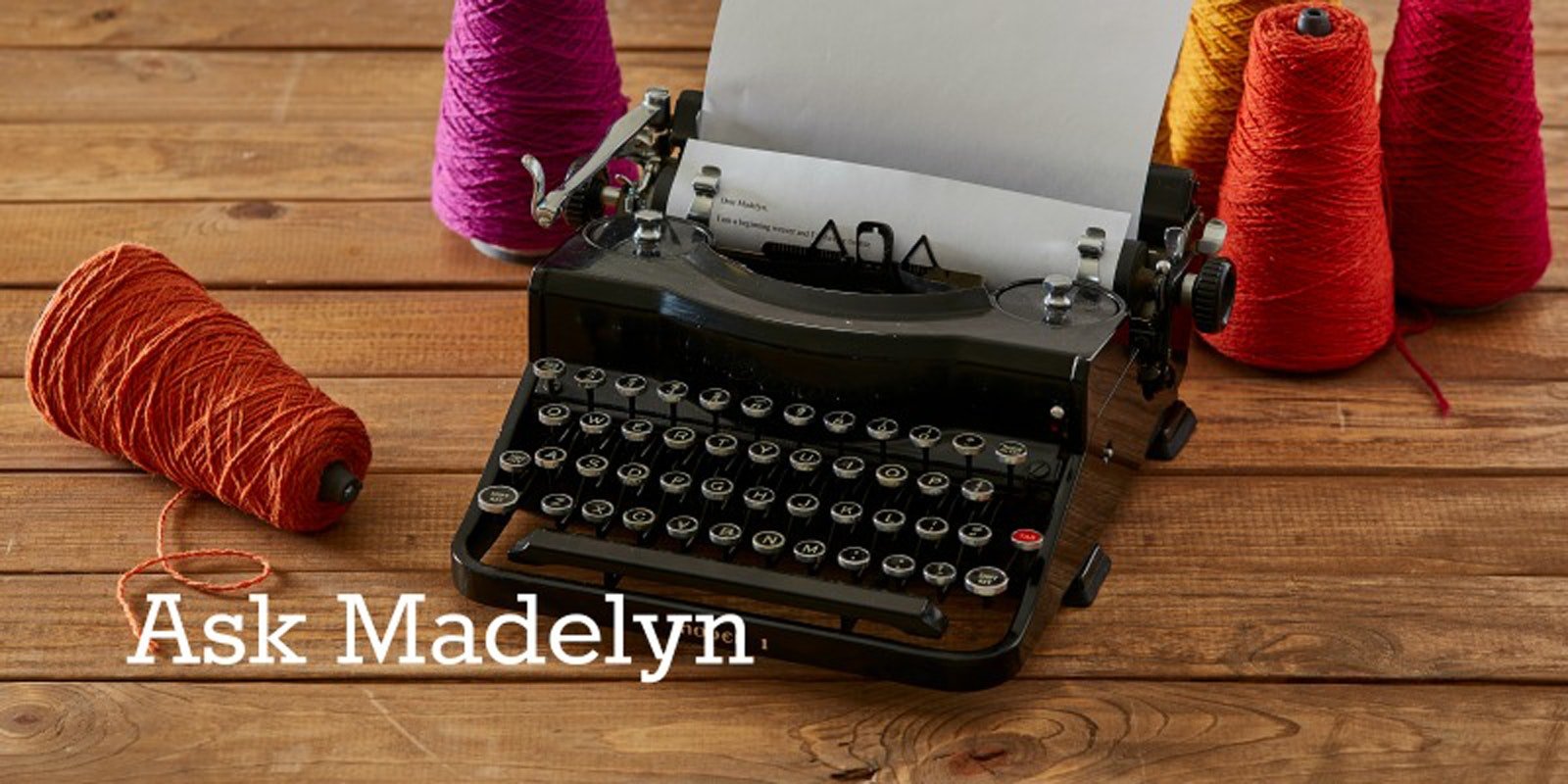Hi Madelyn,
I've been weaving for about two years. Most of my projects are pretty simple (twills and tabbies), but I have ventured into some doubleweave and did a pretty spectacular shawl for my daughter's wedding.
Here's the question: I've noticed that when I am sleying my reed, the "cross" doesn't seem to matter. The pattern comes from the heddles and the treadling. So, why do we have the "cross"? I've always made sure to maintain it, but I wonder why.
Thanks so much,
—Dianne
Hi Dianne!
Congrats on your shawl!
Now to your question. I assume you are a front-to-back warper and that you have sleyed the reed before threading. And chances are good that you are sleying 1 thread in each dent. In that case, there is no reason for a cross, whose purpose is to tell you the exact order of the threads. You have maintained their exact order in the reed. When you thread the shafts, you will take each thread in that order, moving across the warp from one dent to the next. No "cross" is needed as soon as you have sleyed the reed (though you did use the cross to do the sleying).
However, what if you sleyed 2 ends in each dent for a sett of 24 ends per inch using a 12-dent reed? In this case, you wouldn't know which of the 2 ends came first and there could be a chance they'd twist around each other between the reed and their separate heddles. This usually doesn't happen with only 2 ends using a smooth, inert yarn. But if the yarn is sticky or twisty, or if there are more than 2 ends in each dent, you need to keep the cross to tell you which thread comes first. The only problem is that after you've sleyed the reed using the cross (keeping it there with lease sticks), it is on the wrong side of the reed (between the reed and the front beam instead of between the reed and the heddles). You need to "transfer" it to the other side of the reed, which is a pain but is well worth doing because keeping the threads in their exact order makes beaming a pleasant experience instead of pure torture. I do show how to transfer the cross in Warping Your Loom, but you can also keep weaving projects that work with 1 end per dent.
Hmm. But it just occurred to me that you might be a back-to-front warper who has been told to keep the lease sticks in the warp after you have threaded the shafts and sleyed the reed. I know that some weavers think you should do that. That is actually a very bad idea, since wherever the lease sticks are placed means that the shed opening is constrained to that point. Looms are a certain length for a reason; the position of the back beam as as close to the shafts as it can be and still allow the shed that the shaft movement creates. You are shortening that length by leaving in the lease sticks and thereby decreasing the shed.
—Madelyn

